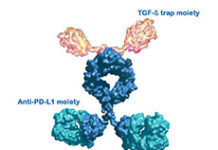When an earlier stage diagnosis of breast cancer occurs, there’s relief in knowing that it was caught early. However, there’s also the fear that the cancer may later come back and spread to other areas of the body. A recent first-of-its-kind study has determined just how much of a risk this is.
A team of researchers performed a meta-analysis of more than 400 studies to get a better idea of how often metastasis occurs, finding that for the average woman, the risk is between 6% and 22%. However, some groups, including younger women, have a significantly higher risk.

Dr. Eileen Morgan from the International Agency for Research on Cancer presented the research at the Advanced Breast Cancer Sixth International Consensus Conference.
She explained, “Most women are diagnosed when their cancer is confined to the breast or has only spread to nearby tissue. But in some women, the cancer will grow and spread to other parts of the body or come back in a different part of the body several years after the end of their initial treatment. At this point the cancer becomes much harder to treat and the risk of dying is higher. However, we don’t really know how many people develop metastatic breast cancer because cancer registries have not been routinely collecting this data.”
To help work through this data issue, researchers looked for as many studies as they could find on the topic. Ultimately, that included more than 400 studies from North and South America, Europe, Africa, Asia, and Oceania. Combined, tens of thousands of women took part.

They found that for most women, the risk of cancer spreading was between 6% and 22%. However, they explained that this number represents the middle half of women involved. A quarter of the women had a higher risk, while a quarter had a lower risk.
One group that had a higher risk of recurrence and spread was women diagnosed before the age of 35. That ranged from 12.7% to 38%, while women 50 and older had a risk of 3.7% to 28.6%. There were theories as to why.
Dr. Morgan explained, “This may be because younger women have a more aggressive form of breast cancer or because they are being diagnosed at a later stage.”
There were also some differences among types of cancer, namely luminal B, a hormone-receptor positive cancer that tends to grow faster, and luminal A, a hormone-receptor positive form that usually grows more slowly. Women with luminal B cancer had a 4.2% to 35.5% risk of spread versus 2.3% to 11.8% in those with luminal A.

With this research providing an insight into risk of metastasis, scientists say the next step is getting a better idea of how many women have metastatic breast cancer throughout the world.
Dr. Shani Paluch-Shimon, a member of the Scientific Committee at the conference who was not involved with the research, says, “There has been a knowledge gap about how many people are living with advanced breast cancer around the world. This study is a step towards filling that gap. The researchers have already been able to give the first reliable estimate of how many breast cancer patients go on to develop advanced disease in contemporary cohorts and identify some of the groups, such as younger women, who face a higher risk. The second part of this study will define how cancer registries can collect adequate data about relapses so that we may know how many patients with metastatic cancer there are in each country.”
She says this will help health officials better understand which resources are needed and where, as well as to have a better grasp on the scale of the disease across the globe.
![]()
Provide Mammograms
Support those fighting Breast Cancer at The Breast Cancer Site for free! →
Whizzco Source









